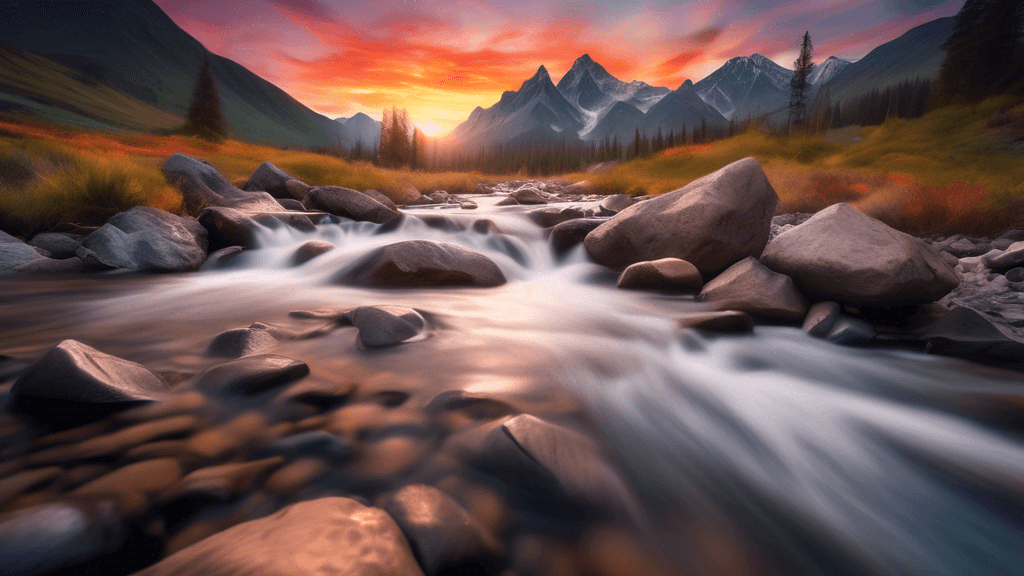
Mastering Depth of Field: Techniques for Deep and Shallow Focus in Landscape Photography
Share
Understanding Depth of Field in Landscape Photography
Depth of Field (DoF) is a critical concept in photography, influencing the aesthetic quality and the viewer's emotional response to an image. But what exactly is depth of field, and how can photographers effectively use it to enhance their landscape photos?
What is Depth of Field?
Depth of Field refers to the portion of a scene that appears sharp and in focus in a photograph. It extends from the closest point in the image that is acceptably sharp to the farthest point that is also perceived as being in focus. The depth of field can be shallow or deep, and both can be used to create stunning photographic effects, each suited to different scenarios and intentions.
The Influence of Aperture
Aperture, one of the primary settings on a camera, plays a significant role in controlling depth of field. Aperture is measured in f-stops. A lower f-stop like f/1.4 means a larger aperture opening, leading to a shallower depth of field. Conversely, a higher f-stop like f/16 implies a smaller aperture, resulting in a deeper focus. Here's how you can use these settings:
- Shallow Depth of Field: To focus on a specific subject while blurring the background and foreground, opt for a lower f-stop. This technique allows the subject to stand out, making it particularly useful for highlighting features such as a solitary tree in a vast landscape.
- Deep Depth of Field: To ensure everything from the nearest to the farthest objects is in sharp focus, choose a higher f-stop. This technique is essential when you want the viewer to enjoy the entire landscape, creating a sense of scale and immersion.
Utilizing Focal Length
Focal length also affects the depth of field. Wide-angle lenses (such as 14mm-24mm) naturally have a greater depth of field, even at larger apertures, making them ideal for expansive landscape shots. Telephoto lenses, on the other hand, can compress your image and create a shallower depth of field, focusing attention more on specific elements.
Hyperlocal Distance and Its Effects
Mastering the hyperfocal distance is another technique to maximize depth of field, especially in landscape photography. Hyperfocal distance is the focus distance which places the farthest edge of the depth of field at infinity. By focusing at this point, everything from half this distance to infinity will be acceptably sharp. This technique is particularly useful in landscape photography to achieve maximum depth of field.
Practical Examples and Applications
Let’s take a scenario where you are photographing a mountain range. Using an aperture of f/22 with a wide-angle lens focused at the hyperfocal distance, you ensure that the flowers in the foreground are as sharp as the mountains in the background. This offers a viewer an immersive experience, as their eye can wander from the foreground to the background without any disruption in focus.
Creative Use of Shallow Depth of Field
Contrary to the common desire for sharpness throughout the scene in landscape photography, using a shallow depth of field can creatively highlight elements. Imagine photographing an autumn leaf resting on a rock. By using a wide aperture, you can focus solely on the leaf with the vast landscape softly blurred in the background, creating a poignant and focused image.
Conclusion: The Artistic Flexibility of Depth of Field
Understanding and utilizing the depth of field effectively allows photographers to dictate the story they want to tell in their images. Whether it's the grandeur of vast scenes in sharp focus or the intimate details highlighted against a soft backdrop, mastering depth of field equips you with not just technical knowledge but also a creative tool to enhance your photographic expression.
But how well do you understand the depth of field in your photography? Experiment with these techniques during your next outdoor adventure and observe how they can change the narrative of your images. Happy shooting!
Mastering depth of field offers a gateway to defining the soul of your landscape imagery, notes celebrated landscape photographer John Doe. Keep this in mind, and let your lens speak your artistic truth.
Are you inspired to redefine your landscapes with these depth of field techniques? Why not head out with your camera today and put these ideas into practice?





